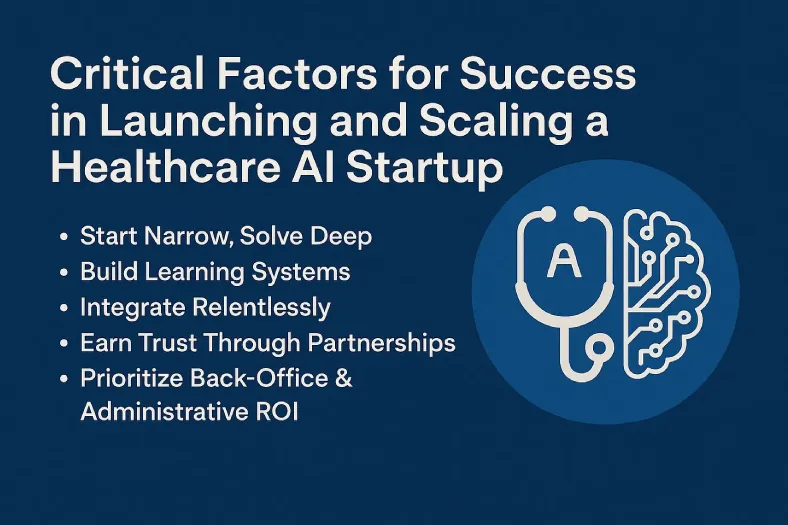The Healthcare AI Divide: High Hopes, Low Transformation
The latest MIT GenAI Divide report is sobering: despite $30–40 billion invested in AI, 95% of enterprise AI pilots fail to create measurable value. The reasons aren’t technical horsepower or regulation—it’s the inability to embed AI into real workflows, learn from feedback, and deliver persistent value over time.
Nowhere is this more evident than in healthcare. While almost every hospital and startup boasts AI pilots—transcription, chatbots, diagnostic support—only a handful ever scale into day-to-day clinical or operational practice. Like other industries, healthcare suffers from a widening “AI adoption gap”: adoption is high, but true transformation remains rare.
Why Healthcare Startups Stall
Healthcare AI ventures often stumble in the same places highlighted in the report:
- Workflow misfit: Tools that don’t integrate with EHRs, billing systems, or clinical routines get abandoned quickly.
- Static AI: Systems that can’t learn from physician feedback or patient context repeat the same errors and erode trust.
- Trust barriers: Hospitals prefer to wait for existing vendors (Epic, Cerner, Philips) to “add AI” rather than gamble on unproven startups.
- Wrong priorities: Funding often chases visible “front office” solutions (chatbots, marketing) instead of the back-office and clinical efficiencies that deliver the highest ROI.
In short, most healthcare AI startups fall in love with the technology, not the messy workflows of medicine.
What Successful Startups Do Differently
The 5% of companies crossing the divide—and scaling to multimillion-dollar healthcare deployments—share a common playbook:
- Start Narrow, Solve Deep
- Focus on one painful, high-value workflow (e.g., prior authorization, radiology overreads, revenue cycle management).
- Deliver immediate, visible wins with minimal setup burden.
- Build Learning Systems, Not Static Tools
- Embed feedback loops so the system improves with every interaction.
- For example, an AI scribe that remembers clinician preferences and adapts documentation style builds trust quickly.
- Integrate Relentlessly
- “If it doesn’t plug into Epic, Cerner, or Salesforce Health Cloud, it won’t be used.”
- Success requires deep integration into existing IT and clinical processes—not another shiny dashboard.
- Earn Trust Through Partnerships
- Hospitals buy from people they trust. The winning startups leverage referral networks, system integrators, and established vendors rather than going it alone.
- A referral from a respected peer or medical society often outweighs a glossy pitch deck.
- Prioritize Back-Office & Administrative ROI
- While patient-facing apps make headlines, the real savings come from automating BPO functions: billing, claims, scheduling, procurement, documentation.
- In healthcare, this translates to freeing up nurses and doctors from administrative overload—a direct boost to the Quintuple Aim.
The Narrowing Window
The report warns that the window for healthcare startups is closing fast. Large incumbents are already embedding adaptive AI into their platforms—Microsoft’s Copilot in Teams and Epic, Oracle’s Cerner integrations, and Google’s Med-PaLM pilots. Once hospitals invest the time to “train” a system on their workflows, switching costs become prohibitive.
Startups that fail to establish a learning, integrated foothold in the next 12–18 months risk being locked out of enterprise healthcare.
A Call to Action for Healthcare Innovators
Healthcare AI has enormous promise—but to cross the divide, startups must move beyond hype and prove real, workflow-level impact.
The lesson is clear:
- Stop chasing flashy demos.
- Start solving the mundane but mission-critical bottlenecks that slow clinicians, frustrate patients, and bleed hospital margins.
- Build systems that learn, adapt, and integrate deeply—because in healthcare, memory, trust, and adaptability aren’t “nice-to-haves.” They are life-or-death necessities.
The future of healthcare AI will not be decided by the smartest models, but by the smartest implementations. The winners will be those who close the GenAI Divide—not just for business, but for the patients who depend on us.



0 Comments